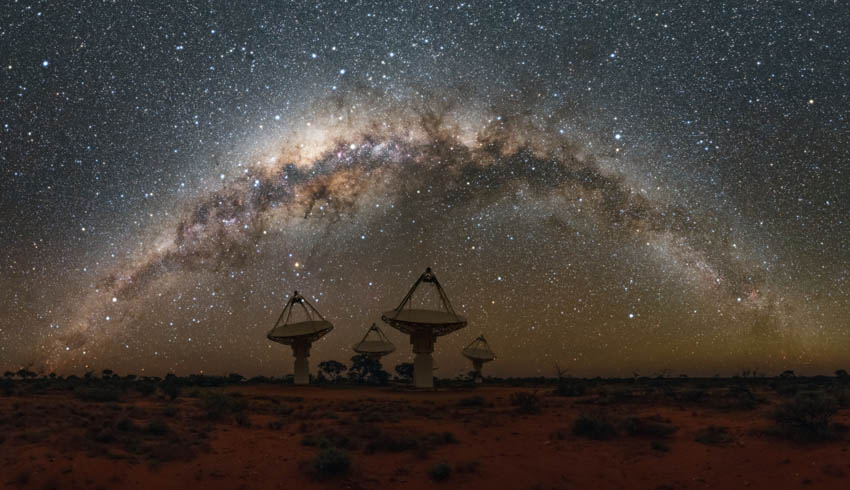Astrophysicist Jocelyn Bell Burnell discovered the first pulsar in 1967. Today, most of the brighter and slower pulsars have been discovered using large telescopes like Australia's Parkes radio telescope (aka The Dish).
CSIRO astronomer Emil Lenc works with the new 36-dish radio telescope, the Australian Square Kilometre Array Pathfinder (ASKAP), which is in outback Western Australia.
Lenc’s job is to run the telescope through its paces, to experiment with innovative ways to process telescope data. But Lenc, alongside a group of other scientists, unexpectedly discovered a pulsar, called PSR J1431-6328. Very creative.
In May, University of Sydney/CSIRO PhD student, Andrew Zic was given time on ASKAP to observe the red dwarf star Proxima Centauri – the closest star to the sun. He wanted to better understand the bright flares from the star and the implications for life on exoplanets around it. But his four-day observation helped discover something new and unexpected.
Meanwhile, during the Proxima Centauri observations, Lenc was interested in testing a new feature on ASKAP. The feature gives ASKAP the ability to see in ‘circular polarisation’. This is where the light waves from a source, such as a star, rotate in a circular motion. This type of light is not common but can be seen in flaring stars and some pulsars.
"Our eyes can’t distinguish between circularly polarised light and unpolarised light. But ASKAP has the equivalent of polaroid sunglasses that filter out the glare of thousands of garden-variety sources, and help pinpoint those rare circularly polarised jewels," Lenc said.
He let the Variable and Slow Transients (VAST) team that he collaborates with know of the potential discovery. This set off a flurry of activity, with the team gathering clues to identify the nature of the second source.
Was it a flare star, a new pulsar, or perhaps something else? Astronomers locally and internationally worked around the clock, sifting through archives to shortlist what it could be.
"Ultimately, my colleague Shi Dai, used the Parkes radio telescope to confirm that our mystery source had periodic pulses. It was indeed a newly discovered pulsar," Lenc said.
Not only was this the first pulsar discovered with ASKAP but also the first pulsar revealed by its circular polarisation – creating a new way for astronomers to discover pulsars.
As it turns out, it’s also in the top 90 fastest spinning pulsars (out of about 2,700 known pulsars) and it’s spinning at a rate of around 360 times a second.
"There are also hints the pulsar we discovered has a nearby neighbour. Together they form a binary system that could help us test our understanding of gravity," explained Lenc.

